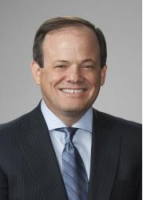Paul D. Nathanson and Joshua C. Zive, senior principals in Bracewell’s Policy Resolution Group, discuss the future of trade and manufacturing under a new Trump administration.
Transcript:
Joshua Zive: Well, election night was certainly something for those of us who follow international trade policy closely. After years of trade policy feeling like a largely forgotten sibling in the family of political issues, over the last year trade policy has been front and center in the presidential election, and with President Trump’s election last night, we are promised to have quite an active coming few months and years when it comes to changes in tariffs and other parts of trade policy. I know that over the past couple of decades, our team here at Bracewell, Paul Nathanson and myself have worked through a lot of different situations surrounding tariffs, including situations involving a President Trump and tariffs. So we have some idea of kind of what to expect and how to roll with the punches, as it were, but you know, Paul, let me ask you a question. With everything people have heard about trade over the last month, you know, or last year, I should say, what can people really expect in terms of what’s at play that could actually be changed in trade policy by a President Trump?
Paul Nathanson: Well, a heck of a lot, because, you know, trade policy and the decision to impose tariffs really resides with the executive branch, with little congressional oversight. Congress has ceded that power, as we saw during the first Trump administration with the steel and aluminum tariffs and the 301 tariffs on China. I think anybody who is involved in international trade needs to go out and go on Amazon or go to your library and read No Trade Is Free: Changing Course, Taking on China, and Helping America’s Workers by Bob Lighthizer, who was the USTR ambassador and under Trump, and whose book really lays out what the Trump trade policy is, which is basically threatening tariffs or imposing tariffs for a variety of reasons.
Joshua Zive: That’s right. I mean, I know Paul that from Section 301 listing to Section 232, tariffs died to national security, to anti-dumping and countervailing duties that are placed on imported products. It seems like there’s no end of levers that are at the disposal of an executive branch. So let me ask you, is there anything, I mean, given that all of this is coming, and we’ve seen this before, is this just a fait accompli? You’ve worked with companies that have been in the crosshair tariffs for a long time. Let’s start with a from a public relations standpoint. Is there something companies should be doing to prepare for this?
Paul Nathanson: Well, sure. You know, as we just talked about steel and aluminum tariffs, they were imposed during the first Trump administration. But the steel producers understand that having your voice heard in Washington is very important. You know, as supply chains are going to run through Washington, and you know, there is just no doubt about it that tariffs are here to stay and that there will be additional tariffs. But Josh, there’s all sorts of things that happen with tariffs that companies, in addition to making sure that their voice is heard here by meeting with their representatives and with the administration, that they should consider in this new world, or continuing world of tariffs.
Josh Zive: Thanks, Paul, that is exactly right in my experience last time around. You know, at least people could have the benefit of trying to be surprised by Trump proposing new tariffs, because in 2016, you know, that really wasn’t the forefront issue in the race between Clinton and Trump. In that race, this time around, folks know what’s coming, and they can either choose to engage that early and try to craft that policy, or just deal with those costs after they’ve already been baked into their contracts and otherwise. And I don’t know about you, but it’s certainly there are no as many different tools there are to impose tariffs, there are also tools to tailor those tariffs. Exclusions and ways to write them, so that you can choose to let certain industries not feel as much of the burden if you want it to be more affordable for them to get their materials in. So it feels to me that we are just at the beginning of this discussion, certainly not at the end.
Paul Nathanson: I definitely agree. I think the takeaway on trade policy is that no matter what sector you’re in, if you’re involved, if your sector is involved in global trade, you need to pay attention, obviously, what’s going on in Washington, and you need to be very engaged, because, as I mentioned, your supply chains now run through Washington, DC.
Josh Zive: That’s right. So look, if you’re watching this and you have international supply chains, which, quite frankly, almost most companies of size now touch that international supply chain, you need to be getting information on a timely basis. Good information, so that you can be making informed decisions about how you kind of make these contracts, plan for these expenses, as well as advocacy, so that you can participate in the development of those policies, both with the agencies in Congress and with the public who will help shape them. So, I hope, if you are concerned about these, now is the time to get moving.




 />i
/>i


